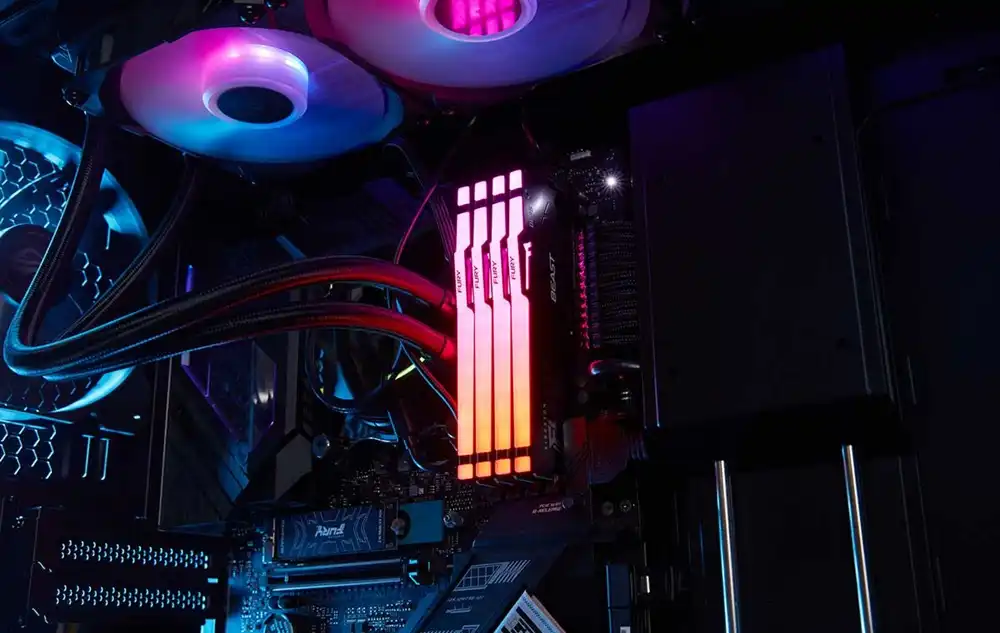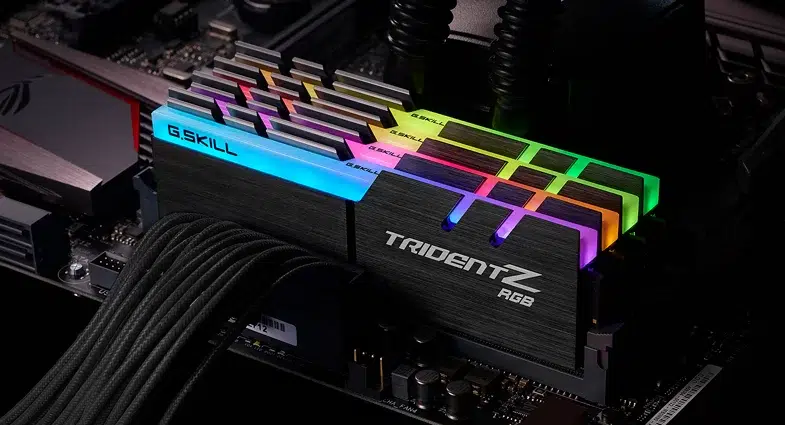Table of Contents
The introduction of DDR5 technology has brought about a radical transformation in the PC memory market. Prominent producers of PC RAM modules are joining the competition as DDR5 memory is included in Intel’s newest architecture. We examine the key characteristics, advantages, and implications of G.Skill and Kingston’s DDR5 options for gamers, enthusiasts, and overclockers.
G.Skill DDR5: Pushing the Boundaries
Leading brand G.Skill, well-known for its commitment to memory speed, leads with its DDR5-6800 CL38 modules. The modules from G.Skill, which are made especially for the newest 12th Gen Intel Core CPUs and Z690 motherboards, provide an unparalleled computing and gaming experience. These modules represent a quantum leap in technical innovation, offering outstanding memory throughput, and are more than just an enhancement.
G.Skill is happy to provide the fastest DDR5-6600 CL36 Trident Z5 memory kits in the market and the fantastic DDR5-6800 CL38. With cutting-edge technology, these kits inspire enthusiasts and overclockers and show G.Skill’s dedication. The Trident Z5 series demonstrates G.Skill’s commitment to pushing the boundaries of DDR5 memory technology and its outstanding performance.
Kingston DDR5: The Power of Versatility

The Kingston has launched the Fury Beast DDR5 line, emphasizing endurance and flexibility, in contrast to G.Skill’s focus on speed. Kingston provides modules that accommodate a wide variety of client demands. Their designs are meticulously checked to guarantee compatibility with Intel ADL-S processors and Z690 motherboards.
The Kingston Fury Beast DDR5 portfolio offers high-speed options for various performance needs. Kingston provides a configurable solution with modules ranging from 16GB 4800MHz CL38 to 32GB 5200MHz CL40, depending on your demands. With this strategy, anybody seeking the most excellent possible performance—from content creators to avid gamers—can discover a setting that works for them.
Speed Showdown: G.Skill vs. Kingston
As seen by the speed competition between G.Skill and Kingston, consumers have several alternatives. G.Skill reaffirms its leadership in high-speed memory with the DDR5-6800 CL38, providing customers with a module that satisfies even the highest performance requirements. Customers can better balance speed and flexibility with Kingston’s more excellent range than other options.
From 4800MHz CL38 to 5200MHz CL40, users may choose a configuration from Kingston’s wide range of modules that best suits their needs. Customers may choose between G.Skill and Kingston in the cutthroat DDR5 market based on whether they favor groundbreaking speeds or a versatile solution that can handle various tasks.
Intel Compatibility: Ensuring Seamless Integration
Both G.Skill and Kingston prioritize that their products work with the newest Intel hardware. Users may feel confident since these DDR5 modules have been verified and tested on Z690 motherboards from well-known manufacturers like Asus, MSI, ASRock, and Gigabyte. The 12th generation Intel Core CPUs are the optimal compatibility for these motherboards.
Customers moving to Intel’s most recent platform can be confident that compatibility will be prioritized, offering a stable and seamless DDR5 experience. Kingston and G.Skill understand how important it is to provide memory modules that work with Intel’s cutting-edge technologies.
Aesthetics and Reliability: G.Skill’s Style vs. Kingston’s Beast

G.Skill emphasizes performance in addition to elegance with their Trident Z5 series of DDR5 memory. G.Skill’s commitment to aesthetics is evident in the anodized aluminum design and the 12 ultra-bright, individually adjustable Capellix LEDs per module.
On the other hand, Kingston’s Fury Beast DDR5 manages to be both visually beautiful and trustworthy. The durable and functional aluminum heat spreader, with its look of long-lasting manufacture, highlights Kingston’s well-known reliability. Because beauty and reliability are prioritized, users may choose between the visually appealing modules offered by G.Skill and the tried-and-true design of Kingston.
Reliability Assurance from Kingston
Kingston places a higher priority on reliability than G.Skill does on speed. After rigorous testing, Kingston Fury Beast DDR5 modules are assumed to be stable and perform well. Customers know Kingston is a reliable source for DDR5 as the company has received certifications from well-known motherboard manufacturers, including Gigabyte, ASRock, Asus, and MSI.
Users may confidently design their systems knowing that Kingston’s Fury Beast DDR5 modules meet and exceed performance expectations.
Consumer Choice: Balancing Innovation and Stability
G.Skill’s innovative innovation, combined with Kingston’s well-established reliability, makes for a very appealing solution for gamers, enthusiasts, and overclockers. G.Skill’s DDR5 products are state-of-the-art, pushing the speed envelope into uncharted territory. On the other hand, Kingston provides a dependable and adaptable solution, fulfilling clients’ needs that appreciate adaptability and a broad range of performance capabilities.
In the end, the choice depends on the person and what their computer-related tasks need. In the expanding DDR5 market, G.Skill and Kingston offer consumers options that are quality models, whether they are looking for a reliable solution or want to be at the forefront of memory technology.
conclusion
In the DDR5 memory market, G.Skill and Kingston are fast rising to prominence, each with its benefits. G.Skill is leading the way in speed and innovation, and they are extending DDR5’s possibilities. On the other hand, Kingston prioritizes durability and flexibility, giving customers a strong foundation for their systems.
Also Read: Intel Core I9-12900k Benchmark, Specs, And Reviews

